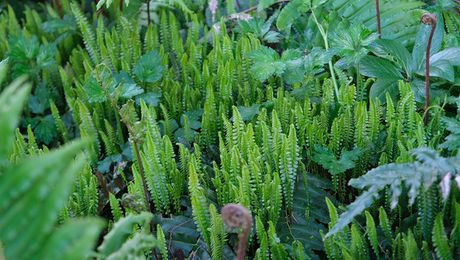
Have you always longed to make wine from tasty sun-warmed grapes gathered from your own backyard? While I live in the ideal wine-growing region (USDA Zone 9b) near the well-known Napa Valley, you’ll be amazed to learn that backyard viticulture is entirely possible anywhere within USDA Zones 4 through 10. Growing wine grapes isn’t hard, but there are a number of key requirements that guarantee success, beginning with growing the wine you love! If you adore a glass of Cabernet Sauvignon at the end of the day, plant Cabernet Sauvignon grapes. When Chardonnay is your preference, you’ll need to grow grapes that produce a full-bodied Chardonnay. The following are some viticulture tips for planning and planting your own personal vineyard.
Plant the right number of grape vines
How much wine do you drink? After the picking, cleaning, squishing, straining, sterilizing, fermenting, bottling, and racking, a twenty-pound grape harvest yields a gallon of homemade wine. With a healthy backyard grape vine producing between 6 and 12 pounds of grapes (depending on soil, climate, and varietal), about 20 vines are necessary if one 5-gallon batch of wine is your goal.

Know your exposure and temperature range
Grape vines yield the tastiest grapes when they receive 7 to 8 hours of direct sunlight per day during the growing season. Excellent air circulation is equally important and particularly crucial in cooler, fungus-friendlier areas. Like other fruit producers, grapes have chilling requirements, with each varietal requiring a certain number of sub-45°F hours each winter for optimal results. While some grapes perform better in cooler zones, others thrive in heat, so choose your variety after researching to ensure you get the appropriate grape for your microclimate. Your best resources for knowing which grape strain is best are local winegrowers. Check with nearby backyard vintners about their experiences, or with your local cooperative extension office if you don’t have any wine-making neighbors.

Get the spacing right
Experts recommend allowing 4 feet of space between plants and 8 feet of space between rows for the best grape production. However, if your site guarantees 7 hours of sun per day and excellent air circulation, you can experiment a little with closer spacing.
Good soil texture is essential
Loose, rich, amended, well-balanced soil with a neutral pH is ideal for growing any kind of grape, with wine grapes being no exception. Dig in compost, or plan farther ahead and plant a cover crop the year prior to planting, and then cultivate that in. If you have clay soil, you’ll need to amend to a depth of at least 3 inches. Good drainage is also crucial for grapes.
Water well, but avoid the foliage
Keep moisture off your vines’ foliage and fruit, and avert potential fungal problems by steering clear of overhead sprinklers. Drip irrigation is perfect for a personal vineyard, ensuring that water is delivered directly to the root zone. During the growing season, most vines need about 5 gallons per week to maintain healthy growth.

Trellising keeps vines sturdy
Two wires strung between sturdy posts is the classic method of training grape vines and requires minimal space while keeping the plants upright so they are easy to monitor and harvest from. Don’t have that kind of space? Try training your vines along a sunny fence.
Prune in late winter and thin occasionally in summer
The fruit is produced on canes that are just a year old, so remove older growth in late winter or early spring to ensure that new growth subsequently develops. When you finish pruning your grape vine, there should be one permanent main trunk remaining, with shortened (only three to eight buds per cane) one-year-old canes. Summer pruning and thinning may be needed to keep the vines from getting too wild, to increase air circulation, and to allow the fruit to receive more sun for ripening.
Feed the vines sparingly
Grape vines do not require a lot of fertilizer. To keep your plants happy, side-dress with a cup of well-balanced organic fertilizer in spring, and add a layer of organic compost to the base of your grapes in late fall.

Pests are plentiful
Deer, rabbits, birds, rats, voles, and gophers all prey on plants or the grapes themselves. Fencing and netting work well against larger mammals, and trapping is vital for rodent control. Insects can also threaten your harvest, but avoid chemical pesticides and use organic methods wherever possible. Alternatively, consider releasing beneficial insects such as lacewings, praying mantids, or ladybugs into your vineyard to combat any “bad” intruders.
Following these steps will ensure that you have a healthy, successful grape growing experience and delicious, full-bodied wine!
—Fionuala Campion is the owner and manager of Cottage Gardens of Petaluma in Petaluma, California.
Photos: Fionuala Campion
Fine Gardening Recommended Products

Lee Valley Garden Obelisks
Fine Gardening receives a commission for items purchased through links on this site, including Amazon Associates and other affiliate advertising programs.

A.M. Leonard Deluxe Soil Knife & Leather Sheath Combo
Fine Gardening receives a commission for items purchased through links on this site, including Amazon Associates and other affiliate advertising programs.

Corona High Performance Orchard Loppers
Fine Gardening receives a commission for items purchased through links on this site, including Amazon Associates and other affiliate advertising programs.



















Comments
Log in or create an account to post a comment.
Sign up Log in